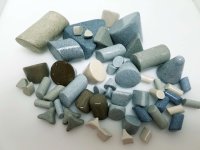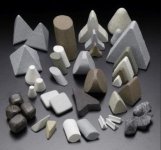RayHeezy
Jr. Member
- Mar 26, 2014
- 91
- 384
- Detector(s) used
- Ace 250
- Primary Interest:
- All Treasure Hunting
Alrighty treasure crew, I'm stumped. My buddy is doing some.pavers out front his house and stumbled upon these. They were found 2-6" deep. No conductive metal inside. a few were about 11.5, a few were about 12.3g, 15.2g,, large was 28.4g. Material feels extremely smooth and heavy. Almost like smoothed marble or granite. One seems to have a rust colored stain on it. Our ideas are a native American game, net weights, or scale weights. Found on the south end of the mouth of the caloosahatchee, Spanish, French, and Native American.









